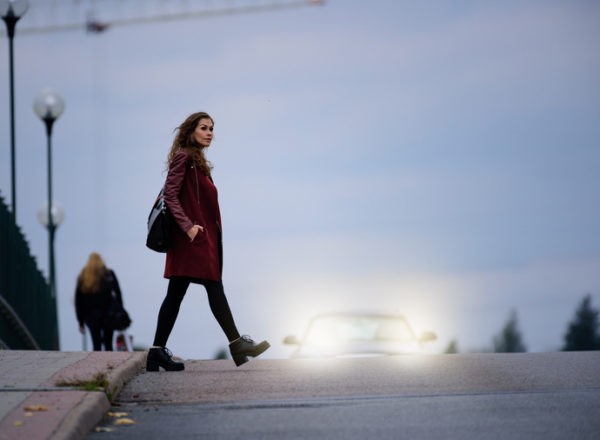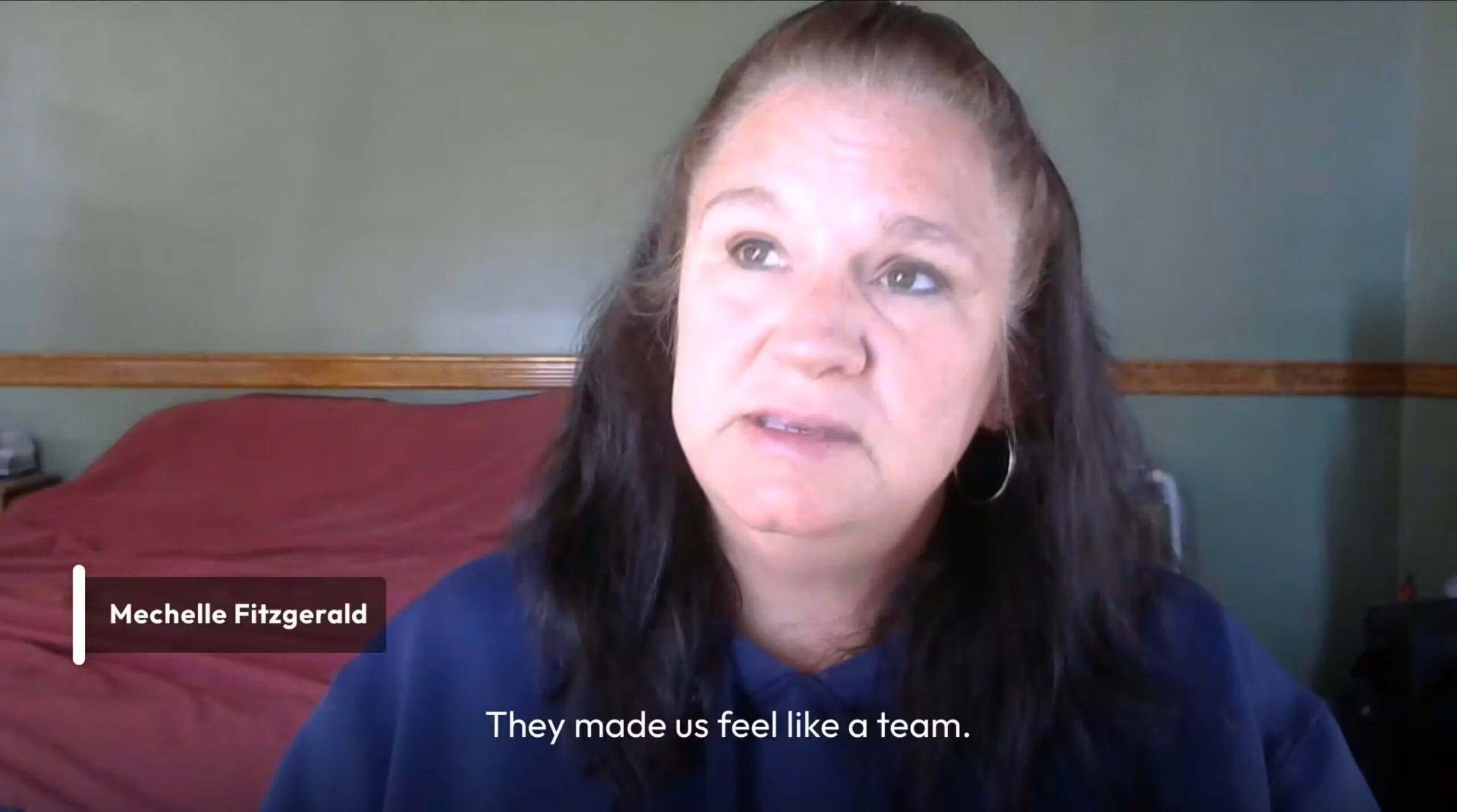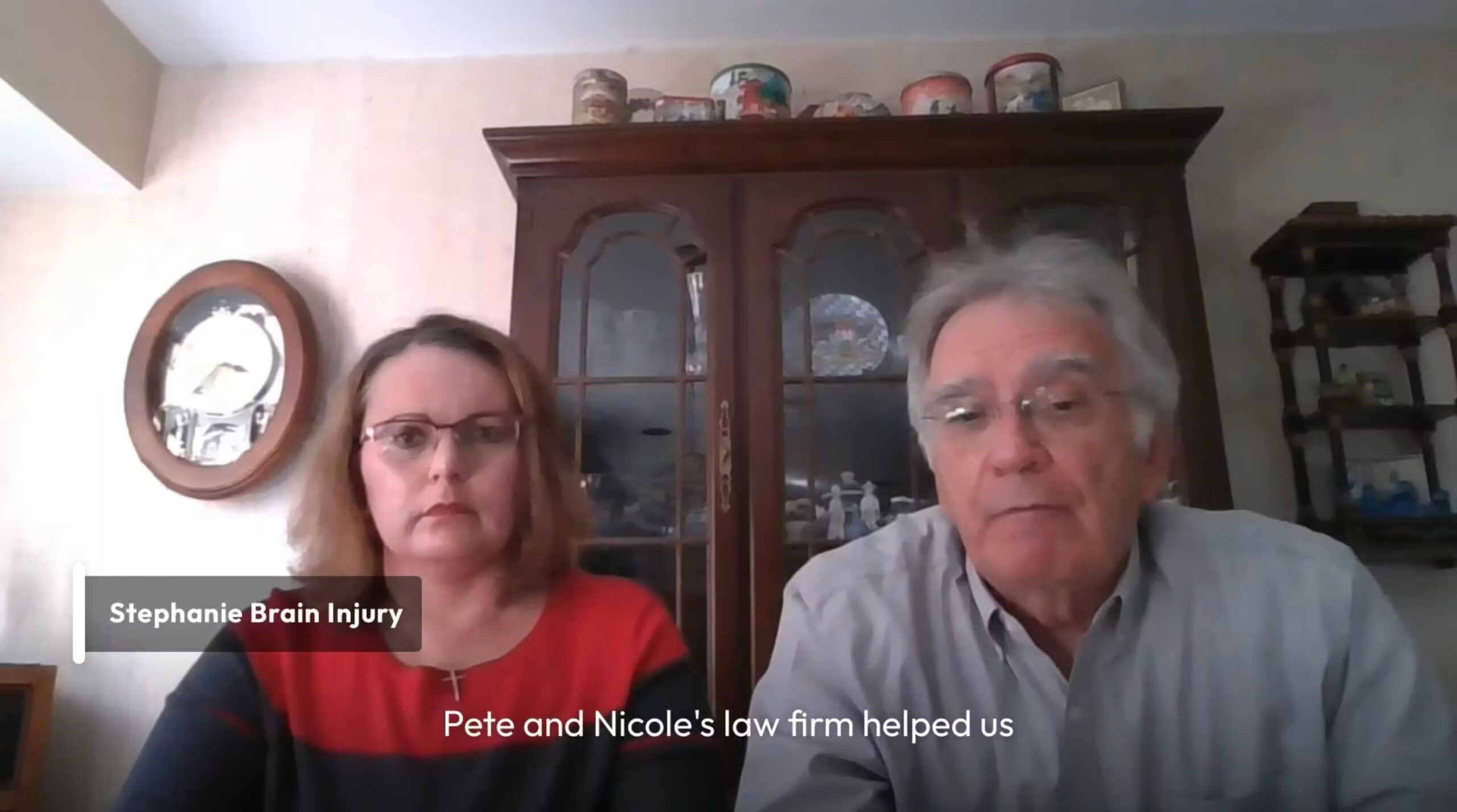The Risk Of Pedestrian Accidents At Night
December 8, 2020

Every driver recognizes that it’s harder to see at night, especially on roads with little or no lighting. But few are aware of just how bad their vision becomes, especially with respect to vulnerable road users.
Marc Green, Ph.D., of visualexpert.com puts it this way: “People fail to slow sufficiently at night because they are unaware how poor their vision has become.” Low visibility at night contributes to many car accidents, but in particular, it’s a deadly cause of pedestrian accidents.
As we approach the winter solstice and the longest nights of the year, let’s take a moment to talk about the way night driving puts pedestrians at risk.
Pedestrians are usually seen in peripheral vision, which suffers at night
Humans are much better at seeing things directly in front of them than off to the side. Motorists typically don’t have too much trouble seeing other cars because they’re either directly in front or just off to the left in the oncoming lane. However, when a pedestrian is about to cross the road, he or she is off to the side, outside the roadway, in an area where the motorist is not likely to look directly. Since pedestrians, even in pairs or small groups, are much smaller than vehicles, they’re easily lost in peripheral vision.
If a car and a pedestrian are on a collision course, this problem gets worse because the driver’s visual cone gets narrower and narrower as the crossing pedestrian gets closer and closer. It’s quite possible for a pedestrian to remain in peripheral vision until it’s too late for the driver to stop.
This is true even during the daytime. However, it gets much worse at night. Low visibility after dark causes drivers to focus almost exclusively on what’s directly in front of them. Motorists simply have very little peripheral vision at night. Visibility issues are further compounded by the higher rates of drunk and drowsy driving.
Of course, all street-legal vehicles are equipped with headlights. Low beams, however, may not illuminate a pedestrian until it’s too late to avoid hitting them. Again, the problem is that most drivers don’t understand how impaired their vision is at night. Consequently, they drive too fast. Going the posted speed limit in darkness puts vulnerable road users at risk.
The key takeaways: slow down if you’re driving, be safe if you’re walking
During the shortest days and longest nights of the year, some amount of driving in darkness is unavoidable. That’s why it’s so important for motorists to put safety first. Slow down below the posted speed limit. Stay alert for pedestrians and other vulnerable road users who may be hard to see at night. Getting to your destination safely is much more important than getting there as soon as possible.
Pedestrians, too, have a responsibility to be safe, including looking both ways and using flashlights or reflective materials to stay visible. However, at the end of the day, motorists have the primary duty to avoid causing injury. If you’ve been hit by a car, you can count on the team at Villari, Brandes & Giannone to stand up for your legal rights. Contact us for a free consultation.
![Quote]() "Want to thank all of you once again not only for your professional services but your friendship and feeling like family through all of these past four years as we fought to rebuild Stefanie's life. I could not have made a better choice for helping us through this ordeal."
"Want to thank all of you once again not only for your professional services but your friendship and feeling like family through all of these past four years as we fought to rebuild Stefanie's life. I could not have made a better choice for helping us through this ordeal."Karl
- "They are all very helpful, caring and they do everything to try to make sure you as a client are OK and get you what you deserve. I would recommend them to anyone. They are a great law firm."
Tiffany
![Quote]() "I will happily be recommending your firm to anyone who may need your help in the future because of Jen, Eric and Brian."
"I will happily be recommending your firm to anyone who may need your help in the future because of Jen, Eric and Brian."Michelle
Hear What Our Clients Have to Say






